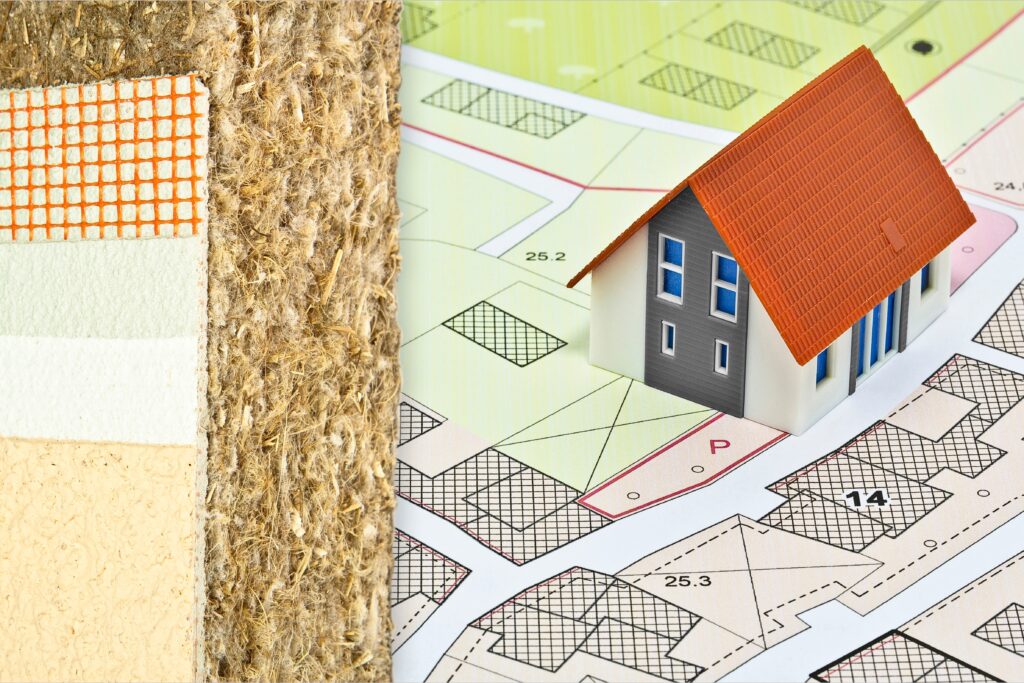In a world increasingly focused on climatic changes and environmental protection policies, architecture is also being called upon to play its part and the choice of materials and technologies hold a key role in ensuring the sustainable success of a project.
It is as part of this context that we will take a look at the pros and cons of thermal cladding and the ventilated façade, as they are efficient project solutions to optimise energy efficiency in new builds and pre-existing buildings.
Ventilated wall or cladding? These are the main differences
When deciding whether to choose cladding or a ventilated façade, the main difference between these two solutions lies in how the insulation panels are attached: with the thermal cladding, the panels are directly attached to the building’s perimeter wall and once installed, are covered with a protective finish produced with a special plaster to ensure excellent yield. A ventilated façade has a particular kind of external cladding which involves applying insulation panels that are detached from the building’s load-bearing wall, supported by a metal sub-structure. One of the main advantages of a ventilated façade is precisely this system which creates a cavity to allow for the natural flow of air as the top and bottom of the façade are left open.
Both systems have clear-cut pros and cons so how do you decide between a ventilated wall or thermal cladding?
Cladding or ventilated façade: pros and cons of thermal cladding
The system has prefabricated elements attached to the façade, typical of thermal cladding and is useful for eliminating thermal bridges between inside and outside. The main advantage of cladding is its insulation capacity which can restrict heat loss during the coldest months and maintain a comfortable temperature in the summer. One of the disadvantages of thermal cladding, however, is the difficulty it poses with regard to maintenance work: exposed to atmospheric agents and as time passes, the cladding can start to show signs of deterioration, and may need to be refreshed which can often prove costly and may need to be done frequently. Furthermore, the permeability of the wall’s water-tight thermal insulation, normally used in thermal cladding may be compromised.

Ventilated wall or cladding: the advantages of a ventilated façade
Ventilated façades are an efficient, state-of-the-art solution which involves the creation of a cavity between the building’s outside structure and the cladding slabs. Unlike the cladding system, insulation with ventilated façade panels allows you to separate the covering on the façade itself from the walls of the building, making the choice and compatibility of materials easier and allowing the flow of vapour from inside to escape.
The advantages of a ventilated façade start precisely here: the air that passes between the building and the cladding flows upwards by chimney effect and optimises the overall thermal performance of the covering, offering significant advantages to the thermal cladding, including acoustic insulation.
When choosing between a ventilated wall or cladding and making a comparison, it is important to point out that ventilated façades are considerably more resistant to atmospheric agents and require less maintenance than thermal cladding, while also offering an impeccable appearance and durability. The advantages of a ventilated façade like its resistance and durability mean the initial costs on installation, at times considerably higher than those incurred for thermal cladding, dramatically reduce the energy consumption of the covering.
These benefits sum up the advantages of porcelain stoneware, an eco-sustainable material which, when applied to ventilated façades as per UNI EN 14411:2016 and ISO 13006:2018 regulations, provides advantages in terms of:
- Excellent mechanical resistance
- Highly resistant to frost and thermal shock
- Low levels of water absorption (≤ 0.1%)
- Low linear thermal dilation (< 7×10-6°C-1)
- Insignificant humidity dilation
- Fireproof (cat. A1)
- Resistant to atmospheric agents
- Resistant to stains and smog
- Fade resistant to sunlight and ageing
- Lightweight and easy to install.
So, which is better, cladding or a ventilated façade?
When assessing the pros and cons of thermal cladding and a ventilated wall, even though both solutions offer important benefits, a ventilated façade emerges as the most advanced, high-performing and sustainable choice. The advantages of a ventilated façade andthe advantages of porcelain stoneware combine greater thermal insulation thanks to the reduction in thermal load on buildings, the reduction in energy costs and less need for maintenance. The porcelain stoneware ventilated façade is the winning choice for those looking for a long-term solution, guaranteeing not only excellent performance but also a long-lasting, attractive appearance.



